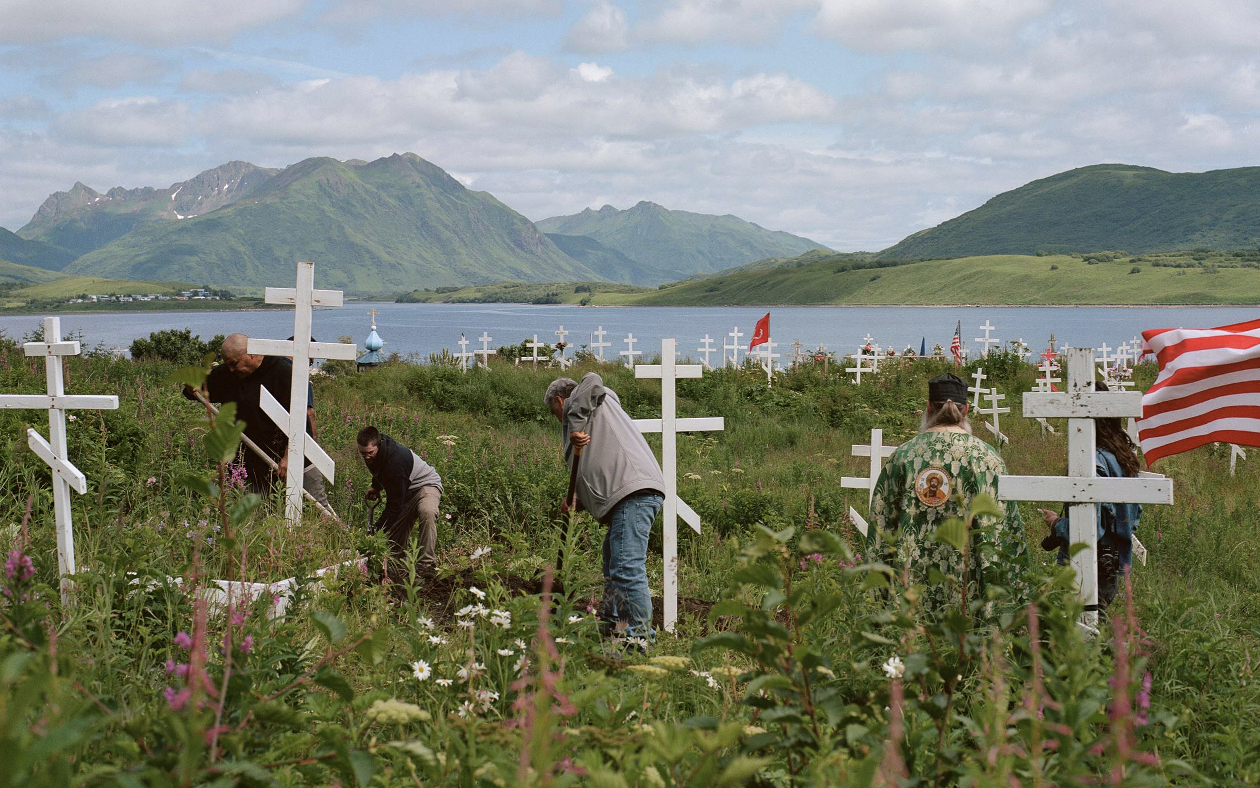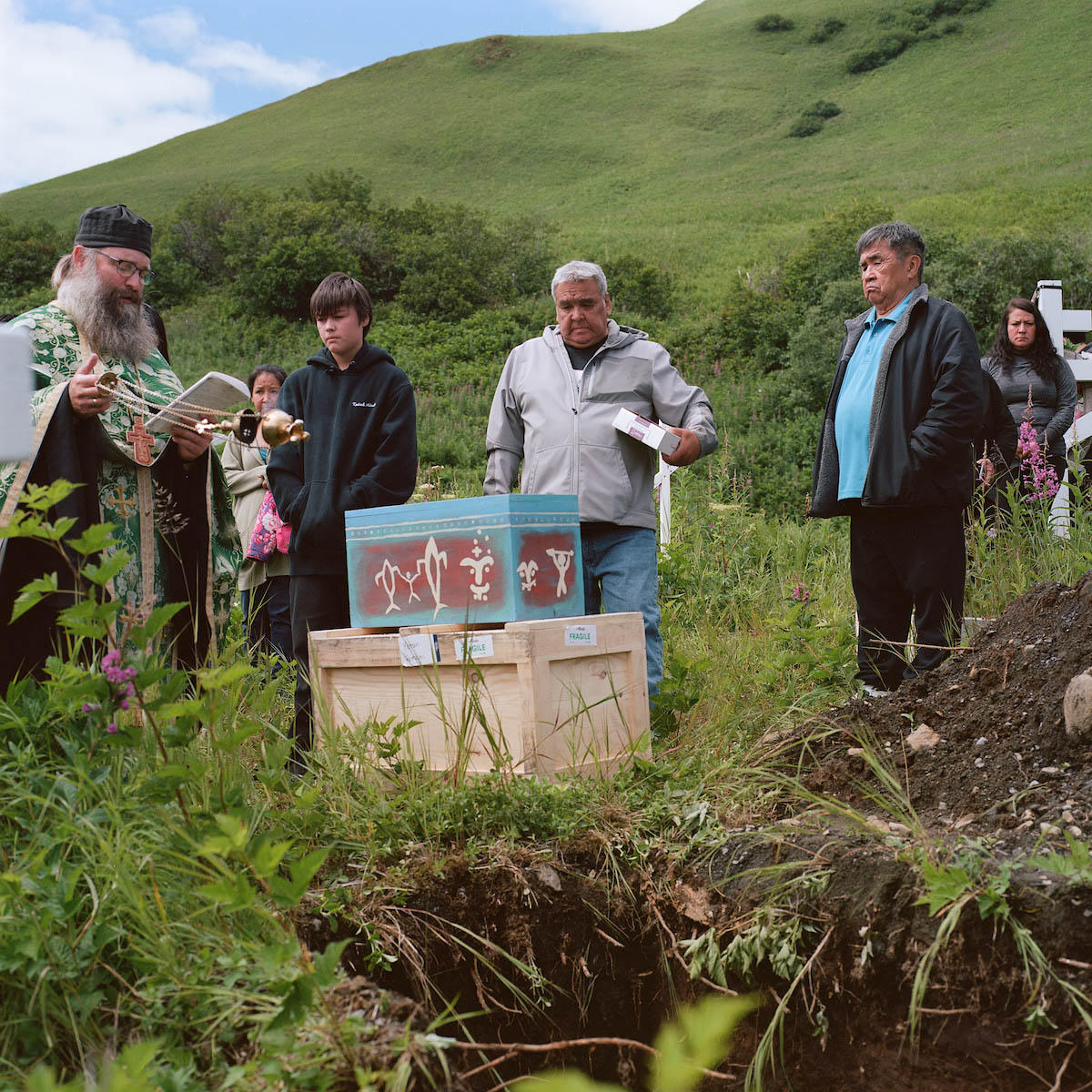
- Details
- By Jenna Kunze
U.S. Interior Secretary Deb Haaland (Laguna Pueblo) and Assistant Secretary - Indian Affairs Bryan Newland (Bay Mills Indian Community) will travel to Anchorage, Alaska, on Sunday, October 22, 2023 to hear testimonies from Alaska Natives and their descendants who endured the nearly 200-year federal Indian boarding school system.
The listening session will be the tenth stop on the “Road to Healing” tour, an effort by the U.S. Department of the Interior to collect oral testimonies and initiate healing following the legacy of the more than 500 institutions operated or supported by the federal government that served to assimilate Indigenous children from the 1800s through the mid 1980s.
Last year, Haaland launched the Federal Indian Boarding School Initiative to shed light on the troubled history of Federal Indian boarding school policies and their legacy for Indigenous Peoples. In May 2022, the Department released Volume 1 of an investigative report as part of the Initiative, which calls for connecting communities with trauma-informed support and facilitating the collection of a permanent oral history.
“The Federal Indian boarding school system deployed systematic militarized and identity-alteration methodologies to attempt to assimilate American Indian, Alaska Native, and Native Hawaiian children through education,” according to the federal report.
Although incisions operated in more than half of all the states, Alaska is “ground zero” for Indian boarding schools, said Indigenous Researcher at the Alaska Native Heritage Center, Benjamin Jacuk-Dolchok (Dena’ina Athabascan, Sugpiaq). Jacuk-Dolchok spoke extensively about his research on Alaska Native boarding schools with Coffee&Quaq podcast host Alice Qannik Glenn (Iñupiaq).
That’s due to its long history with the Russian government, missionaries, and finally the United States government. Although the Interior’s 2022 investigative report of assimilation institutions throughout the United States counted 21 schools that operated in Alaska, Jacuk-Dolchok said his current count is over 100, and still incomplete.
Not only did Jacuk-Dolchok find evidence of institutions first opening in Alaska, but also that the methods of assimilation made infamous by Carlisle Indian Industrial School, often regarded as the nation’s first off reservation boarding school, began in Alaska, too.
Sheldon Jackson, a presbyterian missionary with ties to Carlisle’s eventual superintendent, Richard Pratt, first came to the state on a mission in 1877. By 1878, he had founded the Sitka Mission to assimilate Alaska Native boys, the precursor for the Sheldon Jackson College, a year before Carlisle opened, according to the Alaska Native Knowledge Network.
“We have evidence of [militarization in boarding schools] occurring in Alaska, through Jackson, as early as 1877,” Jacuk-Dolchok said. “Usually, that's something that is attributed to Carlisle. The problem with that is that Carlisle opened up two years later, which means militarization of boarding schools was something that not only started with the church, but the church within Alaska”
Later, Sheldon Jackson became the General Agent of Education in Alaska, where he recruited Alaska Native children and began what would become a legacy of relocating Native children to boarding schools across the country.
In 1901, Anastasia Ashouwak, a Sugpiaq/Alutiiq girl from Old Harbor, Alaska, was among a group of 10 Indigenous children who were taken by a government agent from a Baptist Mission orphanage in Southwest Alaska to a Carilsle. She died there three years later, and was buried under a headstone that misspelled her name.
But in 2022, Anastasia was brought home for reburial by her descendants after 121 years away.

Father Innocent gives a final blessing before Anastasia's coffin is lowered into the ground. (Photo/Brian Adams)
“Every single one of us had family members that went to a boarding school,” Alutiiq Museum Executive Director April Counceller told Native News Online at the time. She was part of the working group to bring Anastasia home, composed of family, Native leaders, and clergy members. “We don't know how many people that totals up to.”
Not only did boarding schools begin in Alaska, but they also persisted for longer than in the lower 48 due to the sprawling geography of the state larger than the area of Texas, California, and Montana combined.
Until the mid-1970s, there were a handful of hub high schools that served predominantly Alaska Native villages, so most children had to board at school or with local families in hub cities. That changed in 1975, when 27 teenage plaintiffs won a lawsuit against the state for not providing high schools in Alaska Native villages.
While Anastasia is the first child to be brought home to Kodiak Island from school, it’s inevitable she won’t be the last. The Alutiiq Museum is in the process of claiming another Sugpiaq/Alutiiq girl, Perascovia Friendoff, who was taken to Carlisle with Anastasia and also died of tuberculosis.
In June 2022, First Alaskans Institute President Liz La quen náay Medicine Crow (Haida/Tlingit) spoke at a Senate Committee hearing, stressing the urgent importance of collecting oral histories from survivors while they are still able to share them. Medicine Crow advocated for the passage of a bill that would establish a federal Truth and Healing Commission that would investigate the impacts and ongoing effects of the Indian Boarding School Policies.
“While we focus on the importance of the children who were taken, it is also incredibly important to focus on the communities that they were taken from,” Medicine Crow said last year. “I often wonder: what would it be like to come from a place with no children? This is what was imposed on our people.”
For more information on the Road to Healing Tour stop in Anchorage, stay tuned for Native News Online coverage of the event.
More Stories Like This
Native News Weekly (August 25, 2024): D.C. BriefsUS Presidents in Their Own Words Concerning American Indians
Native News Weekly (December 21, 2025): D.C. Briefs
Native America Celebrates the Winter Solstice
Tlingit & Haida Launch New Foundation to Support Education, Wellness
Help us defend tribal sovereignty.
At Native News Online, our mission is rooted in telling the stories that strengthen sovereignty and uplift Indigenous voices — not just at year’s end, but every single day.
Because of your generosity last year, we were able to keep our reporters on the ground in tribal communities, at national gatherings and in the halls of Congress — covering the issues that matter most to Indian Country: sovereignty, culture, education, health and economic opportunity.
That support sustained us through a tough year in 2025. Now, as we look to the year ahead, we need your help right now to ensure warrior journalism remains strong — reporting that defends tribal sovereignty, amplifies Native truth, and holds power accountable.
 The stakes couldn't be higher. Your support keeps Native voices heard, Native stories told and Native sovereignty defended.
The stakes couldn't be higher. Your support keeps Native voices heard, Native stories told and Native sovereignty defended.
Stand with Warrior Journalism today.
Levi Rickert (Potawatomi), Editor & Publisher


